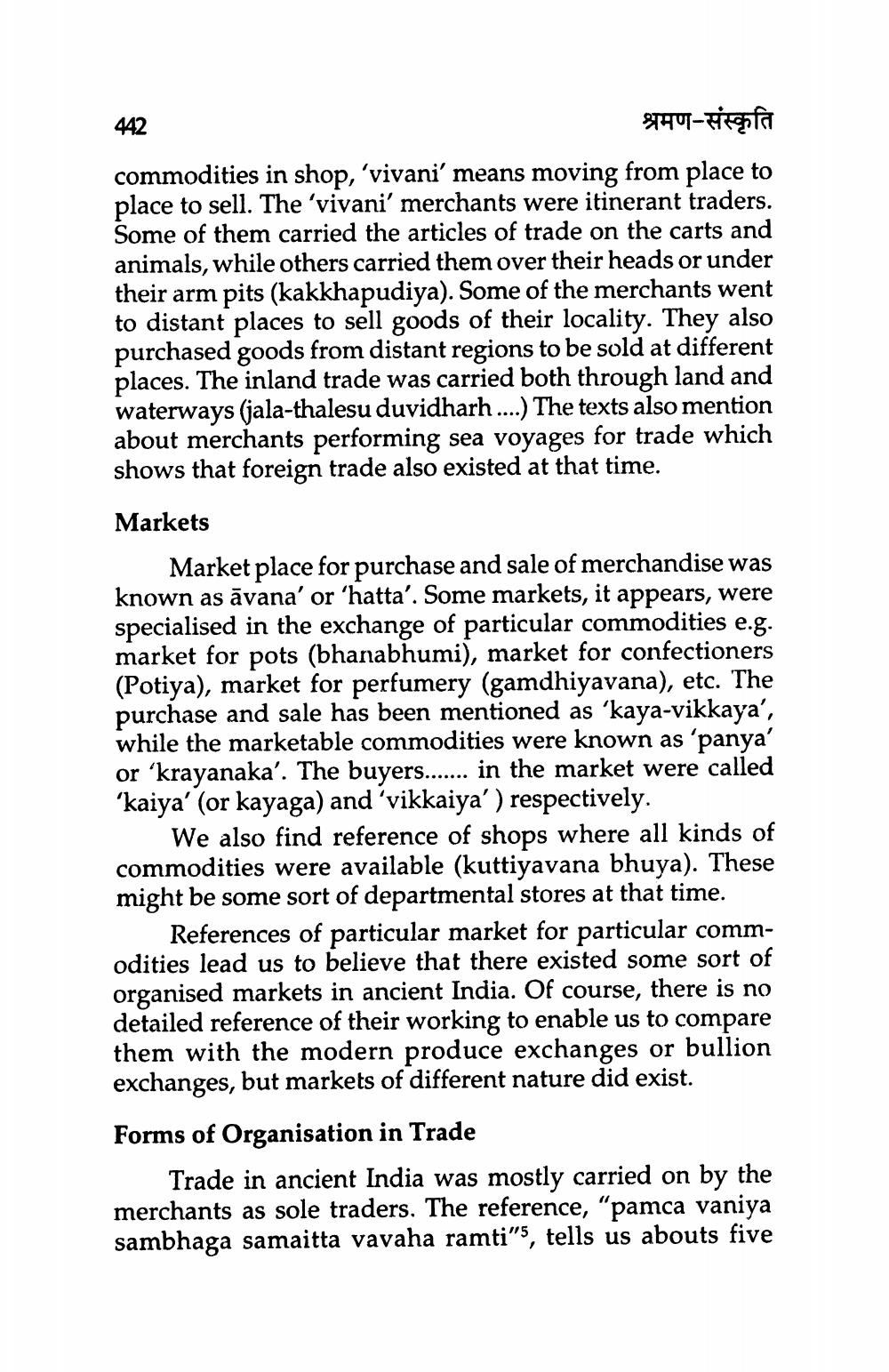________________
442
श्रमण-संस्कृति
commodities in shop, 'vivani' means moving from place to place to sell. The 'vivani' merchants were itinerant traders. Some of them carried the articles of trade on the carts and animals, while others carried them over their heads or under their arm pits (kakkhapudiya). Some of the merchants went to distant places to sell goods of their locality. They also purchased goods from distant regions to be sold at different places. The inland trade was carried both through land and waterways (jala-thalesu duvidharh ....) The texts also mention about merchants performing sea voyages for trade which shows that foreign trade also existed at that time. Markets
Market place for purchase and sale of merchandise was known as āvana' or 'hatta'. Some markets, it appears, were specialised in the exchange of particular commodities e.g. market for pots (bhanabhumi), market for confectioners (Potiya), market for perfumery (gamdhiyavana), etc. The purchase and sale has been mentioned as 'kaya-vikkaya', while the marketable commodities were known as 'panya' or ‘krayanaka'. The buyers....... in the market were called ‘kaiya' (or kayaga) and 'vikkaiya') respectively.
We also find reference of shops where all kinds of commodities were available (kuttiyavana bhuya). These might be some sort of departmental stores at that time.
References of particular market for particular commodities lead us to believe that there existed some sort of organised markets in ancient India. Of course, there is no detailed reference of their working to enable us to compare them with the modern produce exchanges or bullion exchanges, but markets of different nature did exist. Forms of Organisation in Trade
Trade in ancient India was mostly carried on by the merchants as sole traders. The reference, "pamca vaniya sambhaga samaitta vavaha ramti"5, tells us abouts five




